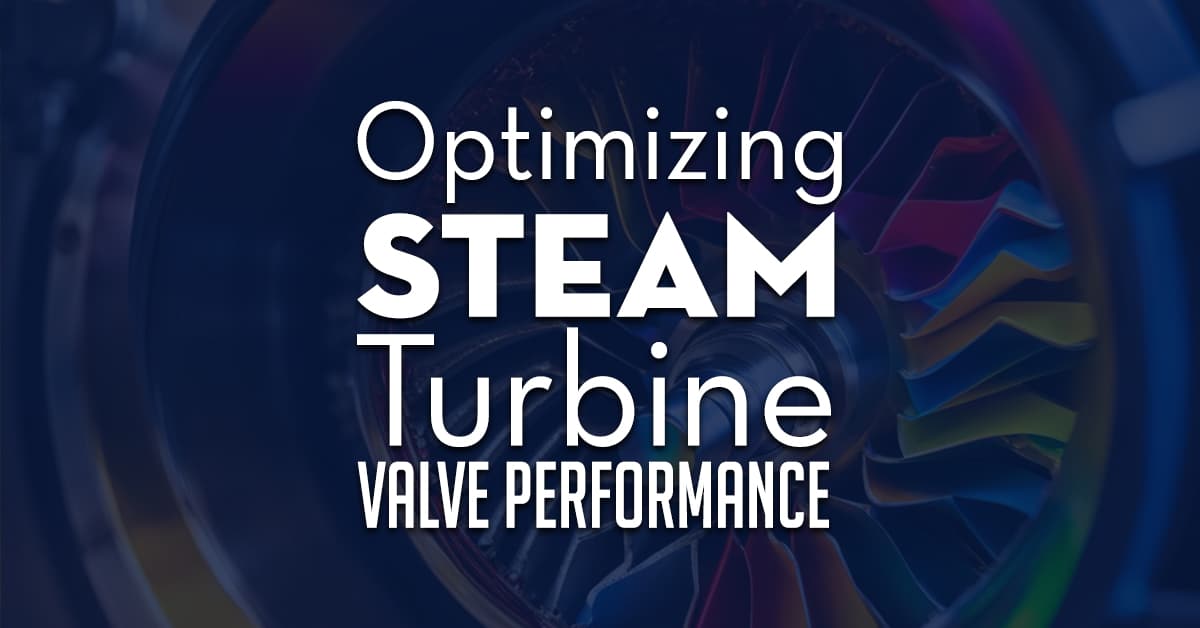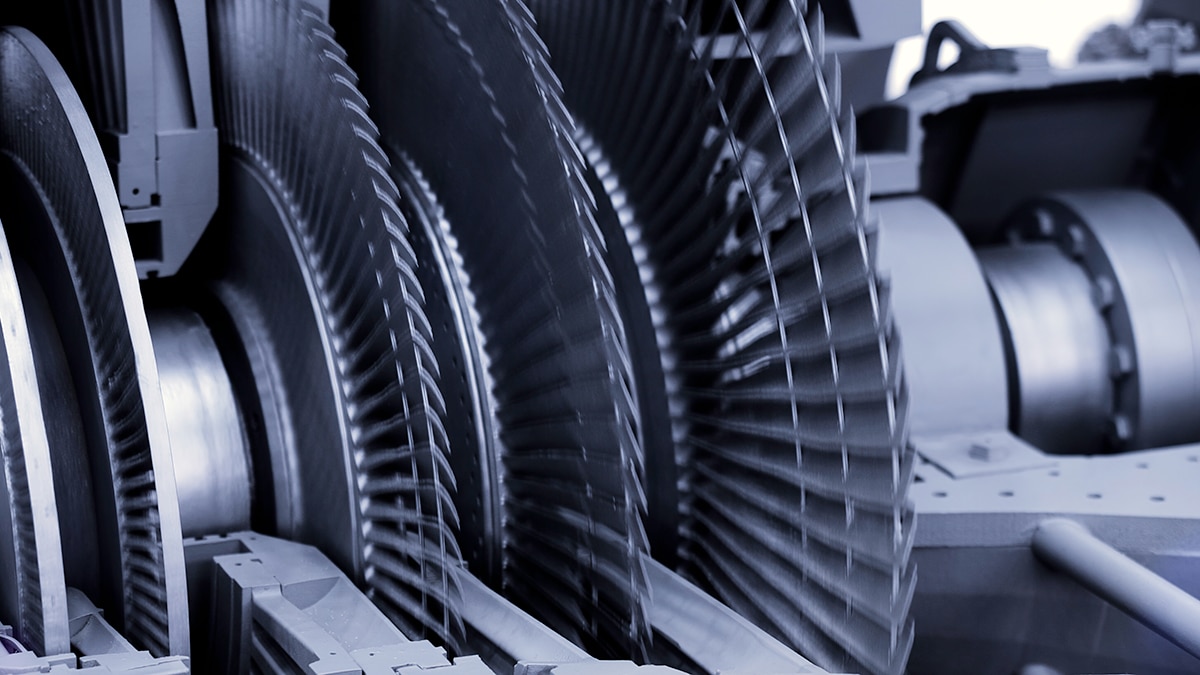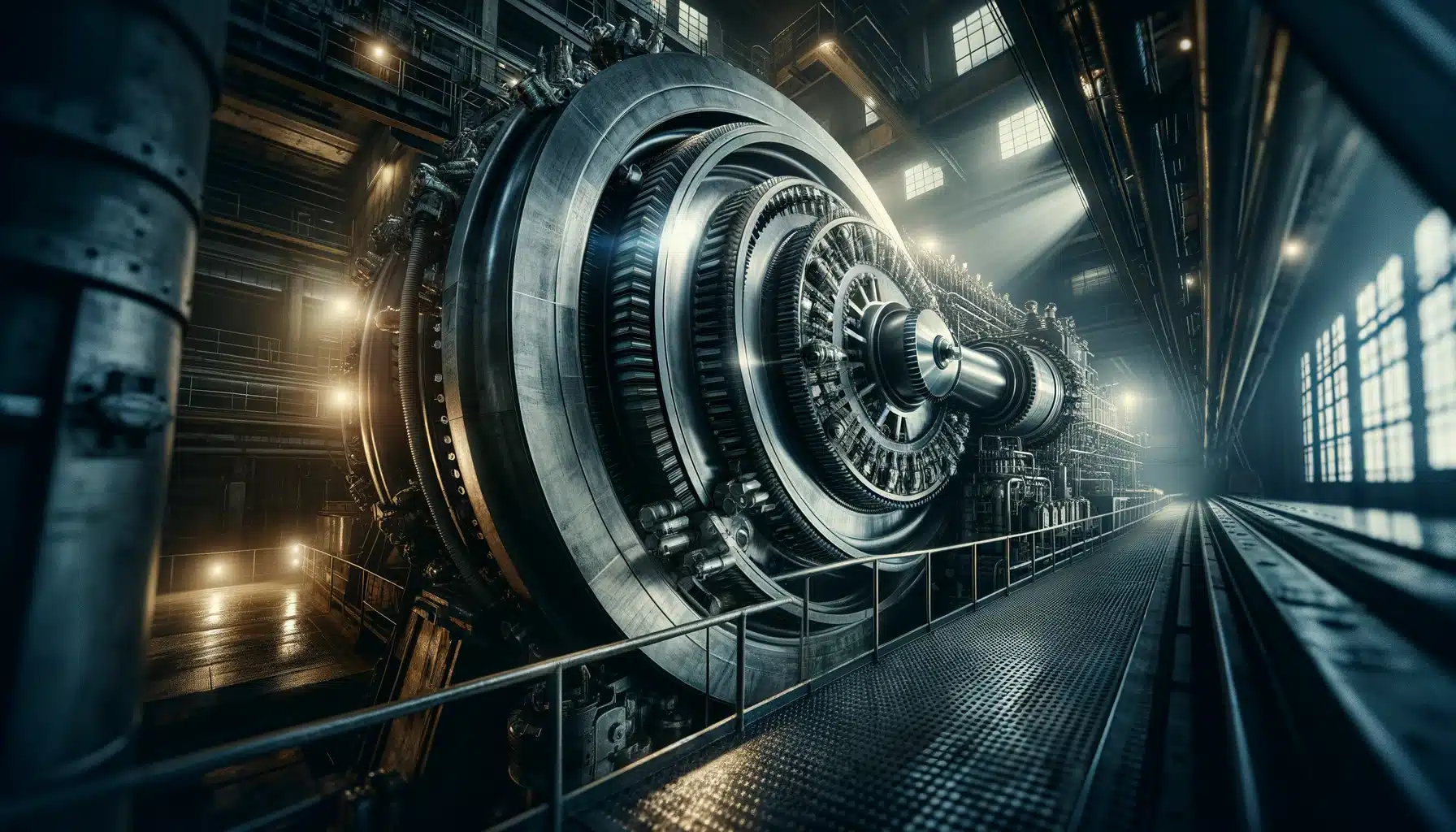The dynamic landscape of power generation has seen a marked shift towards renewable energy, leaving coal-fired power plants to play a supplemental role in grid stability. This transformation demands that such units operate beyond their original design parameters, creating an imperative for turbine valve efficiency to maintain economic viability.
In an industry where margins are closely managed, the focus intensifies on improving valve functionality to support off-design operation without compromising on profitability or sustainability.
As a cornerstone of power plant operation optimization, it’s necessary to explore strategies to enhance steam turbine valve performance. Leveraging field data to align actual operations with theoretical models lays the groundwork for achieving lower heat rates and greater economic outcomes.
Through advancements in control schemes and computational fluid dynamics, the industry is now better equipped to manage steam temperature regulation and curb N2 leakage—key factors that, unchecked, degrade turbine performance.

Key Takeaways
- Frequent off-design operation of turbines emphasizes the need for precise steam turbine valve performance monitoring.
- Optimization studies can lead to better alignments between thermal parameters and actual performance, resulting in enhanced efficiency.
- Field data plays a crucial role in tailoring steam distribution strategies for improved plant economics.
- Modern control schemes and analytical tools are central to enhancing steam turbine valve performance.
- Simulation platforms, such as APROS, are proving invaluable in predicting plant behavior and addressing equipment functionality under variable loads.
- By prioritizing turbine valve efficiency, plants contribute to grid stability while simultaneously upholding environmental standards.
Introduction
Allied Power Group, a renowned industrial steam and gas turbine repair specialist, embodies the forefront of extending the operational lifespan and enhancing the performance of steam turbine systems within the power generation industry.
The transition to operating turbines outside their original design specifications presents significant economic challenges, necessitating a holistic approach toward examining turbine unit properties and steam distribution configurations.
Allied Power Group utilizes sophisticated mechanism modeling to dissect and comprehend the delicate interplay between equipment management and regulatory stages, which is quintessential in spearheading the operational optimization of turbines.
Modern power generation demands require a robust operational model that prioritizes crucial aspects such as valve position and operational load. This model transcends the boundaries of traditional turbine management, proposing an adaptable framework tailored to meet the dynamic needs of power distribution networks.
Entrenched in the philosophy of continuous improvement, Allied Power Group capitalizes on the interconnectivity of various turbine components to advance the sector’s efficiency and reliability.
Here’s a glance at how this approach to turbine management enables Allied Power Group to tailor solutions that optimize performance:
- Conducting thorough assessments of turbine configurations aimed at identifying areas where improvements can be made.
- Applying innovative repairs and maintenance methodologies to ensure the steam turbine system is functioning at its best.
- Fostering a deep understanding of the operational variables that affect turbine performance, thereby offering targeted solutions.
At the heart of any successful power generation entity, like Allied Power Group, is the dedication to excellence and the commitment to providing sustainable solutions that drive the power industry forward.
Basics of Steam Turbine Valve Operation
Steam turbine valves are foundational components that dictate the efficiency and reliability of power generation. These precision-engineered devices play a pivotal role in controlling steam flow, which directly impacts the operational integrity and performance of turbines.
Types of Steam Turbines Valves
Understanding the various types of steam turbine valves is essential for effective valve maintenance strategies and valve optimization. Among the commonly employed valves in steam turbines are governing valves, which manage the steam flow rate; control valves, which modulate steam pressure and temperature; and letdown valves, used for pressure reduction in the steam cycle. Each valve is designed for a unique function, ensuring proper steam flow regulation and contributing to the cycle efficiency of the turbine.
How Steam Turbine Valves Work
The operation of steam turbine valves involves complex interactions between steam pressure, volume, and temperature facilitated by control systems. Especially critical are the governing valve and nozzle configuration which work in unison to adjust the steam flow. Steam valve testing is crucial for assuring the accuracy of these components, enabling them to respond dynamically to changing loads and maintain the ideal turbine exhaust pressure for high-caliber performance. The demanding environment within a turbine means that even minor pressure drops can lead to significant impacts on turbine efficiency.
The Role of Valves in Turbine Performance
Valves are the gatekeepers of turbine performance, where precision in operation is non-negotiable. Enhancing turbine valve performance not only improves steam flow regulation to the reheater and other components but also stabilizes the turbine efficiency. Notably, a balance has to be struck in the control stage to optimize the pressure drop across the nozzle and minimize losses. Regular valve performance monitoring is imperative to spot deviations early and implement corrective actions, thereby upholding the designed cycle efficiency of the turbine.
| Valve Type | Primary Function | Impact on Turbine Efficiency |
|---|---|---|
| Governing Valves | Manage flow rate and power generation | Direct influence on turbine control stage and responsiveness |
| Control Valves | Regulate steam pressure and temperature | Enables optimization of steam pressure for efficiency |
| Letdown Valves | Reduce pressure in the steam cycle | Prevents excessive pressure drop and associated losses |
Ultimately, thorough valve optimization processes which encompass everything from design and installation to maintenance and overhaul, are indispensable for achieving top-tier turbine performance. With the right attention to detail, steam turbines can provide reliable service, maintaining the delicate balance between steam flow regulation and turbine efficiency.
Key Performance Indicators of Steam Turbine Valves
Efficient turbine performance monitoring is imperative for assessing the health and effectiveness of steam turbine systems. Accurate performance indicators within steam turbine valve functionality are vital to ensuring peak power output and maintaining the steam turbine cycles’ integrity. A combination of mathematical models, thermodynamic analysis, and precise engineering within the turbine design contribute to the high standards expected of modern steam turbines.
Measuring Valve Performance
Steam turbine efficiency relies heavily on the precision of valve performance metrics. These include metrics such as the heat rate, cycle performance, and the responsiveness of the valve system. Implementing standards like the ASME Performance Test Code 6 (PTC 6) allows for a methodical approach in evaluating the performance of valves, ensuring alignment with stringent operational benchmarks.
Common Valve Problems and Their Impact on Performance
Various complications can affect the efficiency and performance of steam turbine systems. Leakage, for instance, presents a significant challenge, causing deviations in expected performance levels. In the context of steam turbine valve functionality, N2 leakage is a common issue that compromises steam turbine efficiency. Ongoing research and thermodynamic insights are directed towards creating solutions using mathematical models to predict and mitigate these leakages.
The Consequences of Poor Valve Performance
Neglecting steam turbine valve functionality can lead to a cascading effect of performance issues, including but not limited to increased fuel consumption and reduced load capacity. Challenges like leakage not adequately identified due to limited monitoring can introduce unanticipated inefficiencies into steam turbine cycles. Effective turbine performance monitoring involves routine checks and a strategic approach to collecting and analyzing data to ensure peak operation.
| Performance Indicator | Expected Impact | Monitoring Approach |
|---|---|---|
| Valve Flow Characteristics | Direct impact on steam distribution and efficiency | Application of ASME PTC 6 testing standards |
| Responsiveness | Affects steam turbine cycles and power output response times | Real-time data analytics and performance benchmarks |
| Heat Rate | Indicates fuel efficiency; lower rates signify higher efficiency | Regular cycle performance testing and thermodynamic modeling |
| Leakage Rates | Increased leakage results in decreased cycle performance | Implementing mechanical models and 3D computational fluid dynamics |
Maintenance Strategies for Peak Performance
To ensure the reliability and efficiency of turbine systems, the incorporation of strategic valve maintenance strategies plays a pivotal role. Addressing the operation optimization of these valves within the broader power system can lead to significant improvements in the overall performance and longevity of turbine equipment. Proactive measures help manage existing steam and main steam flow, directly influencing the optimization of steam distribution in power plants.
Routine Maintenance Practices
Structured and regular maintenance schedules are the foundation of maintaining turbine valve health. This includes comprehensive inspections and performance testing to ensure valve optimization is consistently achieved throughout the service life of the turbine system.
Advanced Diagnostic Tools for Valve Health
Utilizing state-of-the-art diagnostic software facilitates performance analysis, crucial for pinpointing inefficiencies and planning appropriate maintenance interventions. Modern simulation tools enable detailed modeling that mirrors actual turbine system conditions, guiding valve optimization efforts.
Repair vs. Replacement
When faced with valve issues, decision-makers must balance the benefits of steam turbine repair against those of replacement or considering retrofit options. Each choice has implications for ongoing operations, with a significant impact on the optimization of steam distribution in the concerned control system.
| Valve Maintenance Action | Benefits | Considerations |
|---|---|---|
| Inspection & Cleaning | Preventative measure against wear and inefficiency | Frequency and method tailored to plant specifications |
| Performance Testing | Ensures alignment with operational benchmarks | Requires accurate instruments and protocols |
| Advanced Diagnostics | Early detection of wear and potential faults | Investment in software like APROS for predictive analysis |
| Repair | Addresses specific issues economically | Effective for extendable service life components |
| Replacement | Upgrades system with modern components | Higher initial cost but can lead to long-term efficiency gains |
| Retrofitting | Enhanced performance with modern technology | Compatibility with existing system must be assessed |
Summary
The pivotal role that optimizing steam turbine valve performance plays in the realm of power plant operation cannot be overstated. Each step, from understanding the dynamics of various valve types and their functionality, advancing towards improving valve functionality, and committing to consistent valve optimization, forms the cornerstone of a well-maintained turbine system. With turbine valve efficiency as a critical focal point, power plants can achieve the dual objectives of enhancing their operational efficiency and minimizing their environmental footprint.
Organizations such as Allied Power Group sit at the forefront of this effort, providing specialized services that are instrumental in elevating the performance of steam turbines. Through performance monitoring that utilizes the latest tools in diagnostics and adheres to meticulous maintenance routines, they lead the charge in ensuring the valves operate at their peak. Implementing strategic decisions when it comes to valve repairs or replacements is essential for maintaining the delicate balance between operational efficacy and cost-effectiveness.
In conclusion, the journey to excellence in turbine valve efficiency is continuous and demands a comprehensive approach that spans maintenance, diagnostics, and informed decision-making. Allied Power Group exemplifies the dedicated engagement required to uplift the industry standard, contributing markedly to the broader objectives of improving the economic and ecological viability of thermal power plants.
Frequently Asked Questions
What are the key strategies to optimize steam turbine valve performance?
To optimize steam turbine valve performance, key strategies include understanding the various valve types and their function within the turbine system, implementing comprehensive valve maintenance strategies, conducting steam valve testing, applying valve optimization techniques, monitoring valve performance, and focusing on enhancing turbine valve efficiency. Allied Power Group specializes in these areas, offering expert services in the repair and maintenance of Industrial Steam Turbines, which are central to the operational optimization of turbines in power plants.
What roles do different types of steam turbine valves play?
Different types of steam turbine valves, such as governing valves, control valves, and letdown valves, are integral to the operation of a steam turbine system. They help in managing the steam pressure, temperature, and flow rate, contributing to the turbine’s efficiency and reliability. Each type of valve has a specific task which impacts turbine performance, including the reduction of pressure drops, ensuring accurate steam flow regulation, and managing cycle efficiency.
How can turbine valve efficiency impact overall power plant operation?
Turbine valve efficiency directly affects steam flow regulation, turbine cycle performance, and ultimately, the overall efficiency of the power plant. Efficient valves ensure minimal pressure losses, maintain the desired steam temperature, and control the turbine’s load and exhaust pressures, which can optimize the plant’s heat rate and reduce overall operational costs. Poor valve performance can lead to increased fuel consumption, reduced load capacity, and diminished thermal energy efficiency, compromising the power output and economic viability of the power plant.
What are common valve problems and how do they affect turbine performance?
Common valve problems include N2 leakage, mechanical wear, and calibration issues, which can lead to suboptimal performance and reduced efficiency. Valve issues can cause increased throttling losses, impact steam distribution, and lower the control stage effectiveness. These problems result in higher heat rates, decreased turbine efficiency, and reduced power output, ultimately affecting the plant’s economic operation and longevity.
How often should steam turbine valves be maintained for optimal performance?
Steam turbine valves should undergo routine maintenance based on manufacturer recommendations and power plant operating conditions. Regular inspections, cleaning, calibrations, and performance assessments are vital to ensuring that valves and related components meet operational benchmarks. The frequency of maintenance may also vary based on valve usage, the presence of any detected issues, and advancements in valve technologies that may require updates or replacements for improved efficiency.
When should steam turbine valves be repaired or replaced?
Decisions on repairing or replacing steam turbine valves depend on factors like the age and condition of the equipment, cost implications, and specific operational requirements. Repairs may be sufficient for addressing minor wear, leakage, and calibration discrepancies. However, replacements or retrofit upgrades might be necessary for valves that are outdated or consistently underperforming. Advanced diagnostic tools and performance data analysis help determine the most suitable course of action for maintaining valve health and efficiency.

